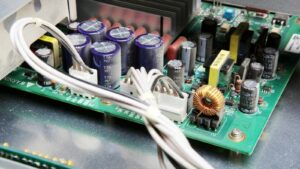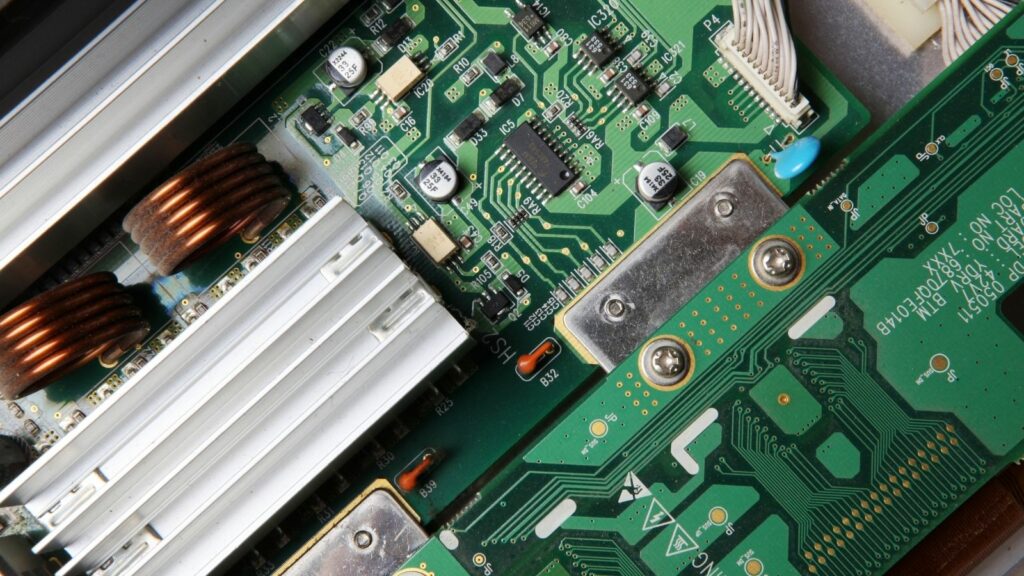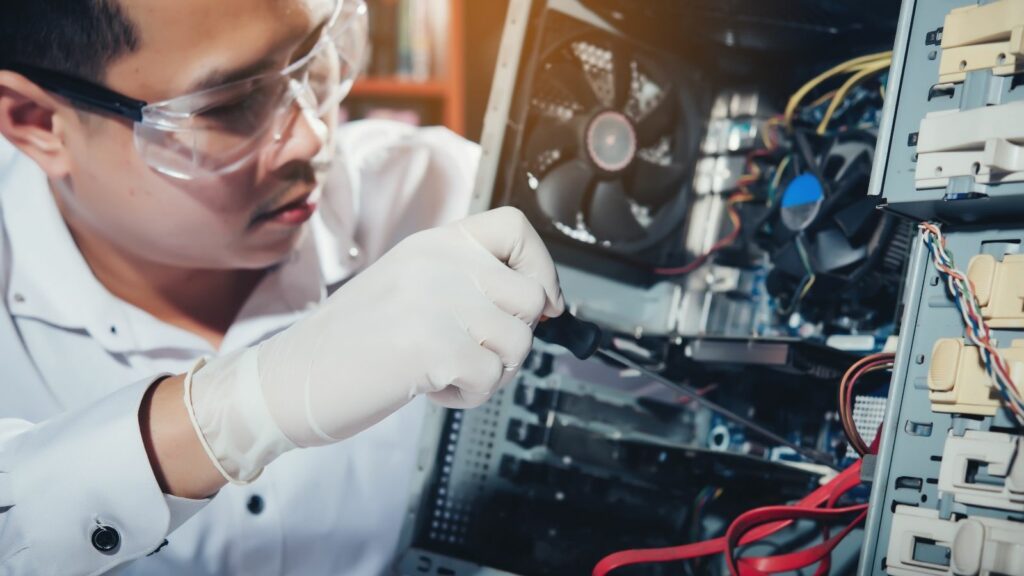Key Takeaways
- Understanding Internal Components: Familiarity with key internal parts such as the motherboard, CPU, RAM, and storage devices is crucial for troubleshooting and upgrades.
- Hands-On Experience: Engaging in practical lab activities helps students effectively identify components and reinforces their technical skills through real-world applications.
- Technical Career Preparation: Knowledge of computer hardware enhances employability in technical fields such as IT support, hardware engineering, and system administration.
- Critical Thinking Development: The identification of internal components fosters critical thinking and problem-solving skills, essential for tackling hardware issues.
- Power Supply Functions: Understanding the power supply unit (PSU) is vital, as it regulates power flow and includes protection features that safeguard hardware components.
Understanding the internal components of a computer is essential for anyone looking to delve into the world of technology. In an advanced hardware lab, students gain hands-on experience identifying these crucial parts, which can significantly enhance their technical skills. From the motherboard to the power supply, each component plays a vital role in a computer’s functionality.
This exploration not only demystifies the hardware but also prepares individuals for troubleshooting and upgrades in real-world scenarios. As technology continues to evolve, familiarity with computer internals becomes increasingly important, making this lab a valuable stepping stone for aspiring tech enthusiasts and professionals alike.
Advanced Hardware Lab 1-1: Identify Internal Parts Of A Computer
 Advanced Hardware Lab 1-1 focuses on equipping students with the knowledge to identify and understand the internal parts of a computer. This practical lab experience details the functions and interactions of major components such as:
Advanced Hardware Lab 1-1 focuses on equipping students with the knowledge to identify and understand the internal parts of a computer. This practical lab experience details the functions and interactions of major components such as:
- Motherboard: Serves as the main circuit board and connects all hardware components, facilitating communication between them.
- Power Supply Unit (PSU): Converts electricity from a wall outlet into usable power for the computer’s internal parts.
- Central Processing Unit (CPU): Functions as the brain of the computer, executing instructions and managing tasks.
- Random Access Memory (RAM): Provides temporary storage for data that the CPU processes, enhancing speed and performance.
- Storage Devices: Includes Hard Disk Drives (HDD) and Solid-State Drives (SSD) that store operating systems, applications, and files permanently or temporarily.
Students engage with real hardware, performing hands-on tasks such as opening computer cases and identifying each component in situ. This method enhances their ability to implement repairs, installations, and upgrades confidently. Additionally, students learn to apply diagnostic tools and techniques for troubleshooting hardware issues, reinforcing important concepts through practical application.
Purpose of Identifying Internal Parts
Identifying internal parts of a computer serves multiple purposes in technology education and professional development. Understanding these components lays a solid foundation for advanced technical knowledge and skills.
Importance in Computer Science Education
Identification of internal components enhances computer science education by providing hands-on experience. Exposure to real hardware enables students to connect theoretical concepts with practical applications. Learning about the motherboard, CPU, RAM, and storage devices fosters critical thinking as students troubleshoot and resolve hardware issues. This knowledge aids comprehension of computer architecture, which is essential for fields like software development and network engineering.
Benefits for Technical Careers
Recognizing internal parts is beneficial for technical careers, as it builds foundational skills required for various roles in technology. Proficiency in identifying components prepares individuals for positions in IT support, hardware engineering, and system administration. Hands-on experience gained in environments like the Advanced Hardware Lab bolsters confidence in performing repairs and upgrades. Employers value such competencies, as familiarity with hardware diagnostics and maintenance significantly contributes to overall organizational efficiency and effectiveness.
Key Internal Parts of a Computer
Understanding the internal parts of a computer is crucial in advanced hardware labs. This knowledge promotes effective troubleshooting and upgrades, equipping students with essential skills.
Central Processing Unit (CPU)
The central processing unit (CPU) acts as the brain of the computer, executing instructions that drive software applications. It processes data, performs calculations, and manages tasks through its cores and threads. Modern CPUs often include integrated graphics, enhancing performance without the need for a separate graphics card. Testing tools such as benchmark software can evaluate CPU effectiveness in various computing environments.
Motherboard
The motherboard serves as the main circuit board, connecting all internal components. It houses the CPU, RAM, and expansion slots, providing pathways for data transfer. Various interfaces, such as USB and SATA, allow peripheral and storage device connection. Understanding motherboard layout and features is vital for effective upgrades and troubleshooting. Familiarity with BIOS settings and firmware updates also enhances system performance.
Random Access Memory (RAM)
Random access memory (RAM) provides temporary storage for data currently in use, allowing quick access for the CPU. More RAM correlates with better multitasking capabilities and increased application performance. Modern computers utilize dual-channel or quad-channel configurations, maximizing memory bandwidth. Diagnosing RAM issues can involve software tools that test for stability and errors, ensuring optimal system functionality.
Storage Devices
Storage devices retain data permanently, allowing for file access even when the computer is powered off. Common options include hard disk drives (HDD) and solid-state drives (SSD). HDDs provide larger storage capacities at lower costs, while SSDs offer faster data retrieval and boot times. Understanding storage speed, capacity, and reliability is essential for making informed purchasing decisions. Diagnostic tools can help assess drive health and prevent data loss.
Power Supply Unit (PSU)
The power supply unit (PSU) serves as the essential component that converts electrical power from an outlet into usable power for the computer’s internal parts. The PSU includes various cables that power devices like the motherboard, CPU, and graphics card, ensuring that each component receives the correct voltage and current.
Key Functions of the PSU
- Power Conversion: The PSU transforms alternating current (AC) from the wall outlet into direct current (DC), which is needed by computer components.
- Voltage Regulation: The PSU maintains stable output voltages (typically 3.3V, 5V, and 12V) to prevent fluctuations that could damage hardware.
- Efficiency Ratings: Many PSUs come with efficiency certifications such as 80 PLUS, indicating their efficiency levels in converting AC to DC power. Higher-rated units waste less energy and generate less heat.
- Protection Features: The PSU includes protection mechanisms like overvoltage protection (OVP), overcurrent protection (OCP), and short-circuit protection (SCP) to safeguard components from electrical failures.
Identifying the PSU
Students can locate the PSU in the computer case, usually positioned at the top or bottom rear. It connects to the motherboard and other components via a variety of cables. Understanding how to identify and read PSU specifications, such as wattage ratings and circuit protection features, contributes to knowledge about selecting the right power supply for system builds or upgrades.
- Wattage Requirement: Calculate total power consumption based on all components, considering future upgrades.
- Connector Types: Ensure compatibility with components, including the number of PCIe connectors for graphics cards.
- Form Factor: Match the PSU size with the case type, such as ATX, SFX, or TFX.
Understanding the role and functioning of the power supply unit empowers students to make informed decisions regarding installation and upgrades, enhancing their technical skill set.
Practical Activities in the Lab
Students participate in various practical activities that enhance their understanding of computer hardware. Engaging in hands-on tasks helps solidify their knowledge and builds confidence in working with technology.
Hands-On Identification
 Students perform hands-on identification of internal components within a computer. They carefully open computer cases to access parts such as the CPU, RAM, and storage devices. Each student examines the motherboard, noting connections for power and data transfer. By utilizing diagnostic tools, learners assess component functionality, gaining practical experience in recognizing hardware configurations and troubleshooting procedures. This immersive practice leads to clearer comprehension of individual parts and their roles in the overall system.
Students perform hands-on identification of internal components within a computer. They carefully open computer cases to access parts such as the CPU, RAM, and storage devices. Each student examines the motherboard, noting connections for power and data transfer. By utilizing diagnostic tools, learners assess component functionality, gaining practical experience in recognizing hardware configurations and troubleshooting procedures. This immersive practice leads to clearer comprehension of individual parts and their roles in the overall system.
Group Discussions and Collaborations
Collaborative group discussions facilitate deeper understanding among students. Small groups identify various internal parts while sharing insights and techniques. Each participant contributes their observations, promoting peer learning. Groups often debate the impact of specific components on system performance, enhancing analytical skills. Sharing troubleshooting strategies aids in solidifying individual understanding while also fostering teamwork. This collaborative approach mirrors real-world environments and prepares students for professional interactions in the tech industry.
Reinforces Theoretical Knowledge But Also Builds Practical Skills
Mastering the identification of a computer’s internal parts is crucial for anyone pursuing a career in technology. The Advanced Hardware Lab 1-1 provides invaluable hands-on experience that not only reinforces theoretical knowledge but also builds practical skills. As students engage with real components and utilize diagnostic tools, they gain confidence in troubleshooting and upgrading systems.
This foundational understanding of hardware is essential in today’s tech-driven world. It empowers individuals to make informed decisions in their professional journeys while enhancing their problem-solving abilities. Ultimately, the skills acquired in such labs position students for success in various technical fields, making them assets in any organization.



